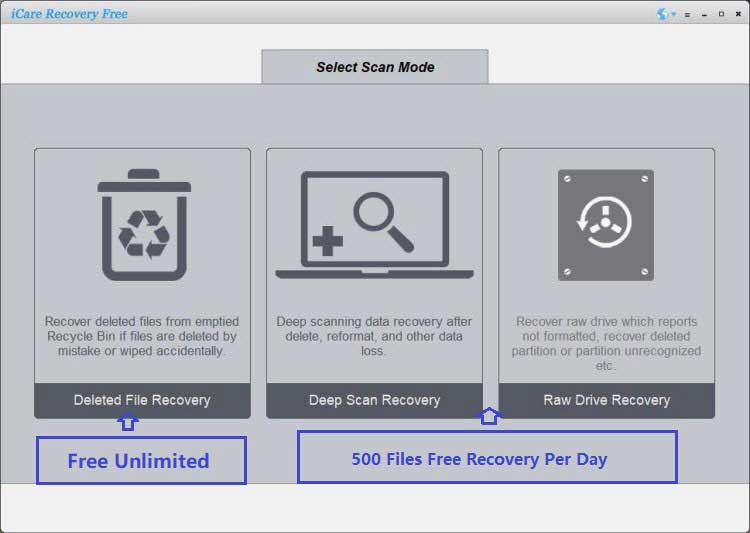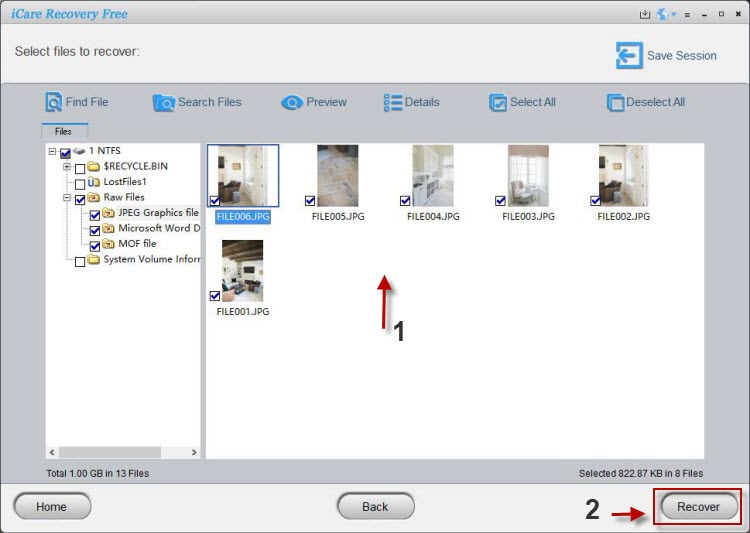Recover Files from RAW SanDisk micro SD Card — Photo & Video Recovery
✓recover files from raw sandisk micro sd card: If Windows or your device reports the SanDisk microSD card as RAW (unreadable filesystem) you can often retrieve photos, videos and other files with a file-recovery tool (for example iCare Recovery) by running a deep scan — provided the card's flash memory isn't physically damaged and you do not overwrite it. ✨
Keywords: recover files from raw sandisk micro sd card, raw sandisk micro sd card photo recovery, raw sandisk micro sd card data recovery, recover videos from raw sandisk micro sd card.
What does "RAW" mean for a SanDisk micro SD card?
A card showing as RAW means the operating system can't recognize the filesystem (for example FAT32 or exFAT). This can happen after corruption, unsafe removal, interrupted formatting, or firmware issues. The data may still exist physically on the flash cells — but the index/metadata (file table) is damaged or missing.
When you can recover files from a RAW SanDisk micro SD card
- ✓Logical corruption only: File table / partition table damaged but flash memory intact.
- ✓Accidental formatting: Quick-format removed filesystem metadata but didn't overwrite file contents.
- ✓Deleted files: Files removed but not yet overwritten.
- ✓OS errors: Device reports RAW after a power loss or unsafe removal — data often recoverable with a deep scan.
When recovery is unlikely or impossible
- ✖Physical damage: Severe trauma, water + corrosion, or controller failure — can make recovery impossible or require specialized lab work.
- ✖Overwritten data: Writing new files or reformatting with multiple-pass formats may have overwritten previous content.
- ⚠️Low-level reformat / secure erase: Tools that zero the flash or perform firmware-level wipes will generally render recovery impossible.
Step-by-step: RAW SanDisk micro SD card recovery with iCare Recovery
When your SanDisk micro SD card turns RAW, follow these steps to maximize the chance of retrieving photos, videos, and other files. A tool like iCare Recovery can make the process easier:
- Stop using the card immediately. Do not copy new files to it — this risks overwriting recoverable data.
- Connect with a reliable card reader. Insert the microSD into your computer with a good-quality reader (avoid recovering directly through the camera).
 Download, install & launch iCare Recovery. Make sure you install it on your PC, not on the affected SD card. Open the program and choose "Deep Scan" or "RAW File Recovery" mode.
Download, install & launch iCare Recovery. Make sure you install it on your PC, not on the affected SD card. Open the program and choose "Deep Scan" or "RAW File Recovery" mode.
- Select the RAW SanDisk card. Point iCare Recovery to the microSD card as the source and start the scan. Let the process run fully — it will detect photos, videos (MP4, MOV), and other file types.
- Preview and recover files. Once scanning completes, preview recoverable items. Save them to a different drive (never back onto the same microSD).

- Check & back up your files. Verify recovered content and copy critical files to multiple safe locations for protection.
⚠️ Note: Please do not install the software on the sd card to avoid data overwriting, nor save found files to the SD card. Or you files may risk permanent data loss. iCare Recovery offers Free version with unlimited file recovery. Advanced functions have limit on daily free recovery. Up to 500 files free recovery per 24 hours on the advanced mode.
Also read: RAW SD card recovery or Sandisk sd card recovery
Quick tips to maximize recovery success
- •Use read-only / safe scan modes to avoid further writes.
- •Try multiple tools — different tools use different signatures and heuristics (e.g., iCare Recovery, PhotoRec, Recuva, commercial suites).
- •Image the card first (create a byte-for-byte copy) then work from the image file — this preserves the original.
- •Keep power stable and avoid removing the card while scanning.
Example recovery scenarios
Scenario A — Success: Camera interrupted during file write → card becomes RAW. A deep scan finds many JPG and MP4 fragments; you recover 90% of photos and most short videos. Result: ✓ partial-to-complete recovery.
Scenario B — Failure: MicroSD physically damaged (controller/connector burned) → OS cannot enumerate the device properly. Offline lab services may be needed but success is uncertain and costly. Result: ✖ likely not recoverable by consumer software.
Frequently Asked Questions (FAQ)
- Q: Can I recover photos from a RAW SanDisk micro SD card myself?
- A: Often yes if the issue is logical corruption, accidental formatting, or deleted files — use a read-only deep-scan recovery tool like iCare Recovery. If the card is physically damaged, DIY recovery is unlikely.
- Q: Will running CHKDSK fix a RAW card?
- A: Be careful. CHKDSK can sometimes repair filesystem data but may also alter or overwrite metadata, reducing recoverability. It's safer to image the card and run recovery software first.
- Q: How much does iCare Recovery cost?
- A: iCare Recovery often has a free scan/preview and paid tiers for full file export. Check the vendor for current pricing and licensing details.
- Q: Are my recovered videos corrupted?
- A: Recovered videos can be playable or partially corrupted depending on how much of their file data and header were intact. Some tools can repair fragmented MP4/MOV files.
- Q: Should I send the card to a lab?
- A: Send to a professional lab if the card has physical damage or the data is extremely valuable and consumer software fails. Labs are expensive but sometimes succeed where software cannot.
✦ Summary: If your SanDisk micro SD card is reported as RAW, there's a good chance to recover files from raw sandisk micro sd card using read-only deep-scan recovery tools (such as iCare Recovery), provided the flash memory isn't physically damaged or overwritten. Always stop using the card, image it if possible, and recover files to a different drive.
© 2025 This article does not replace professional data-recovery services.
Related Articles
